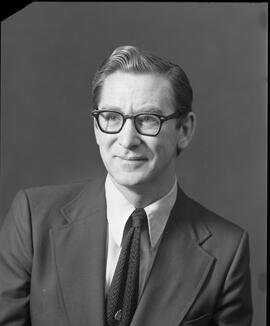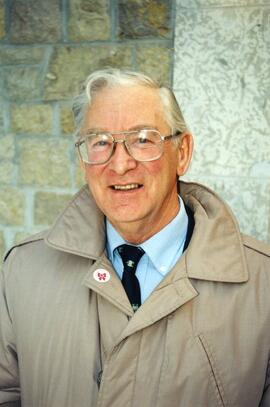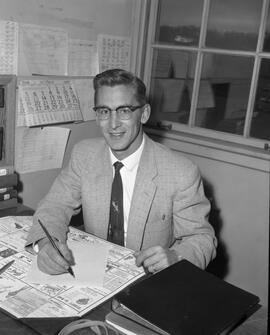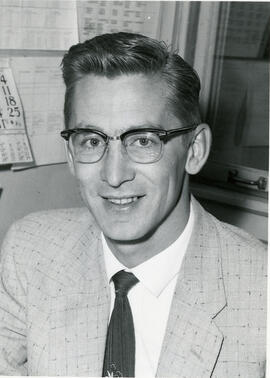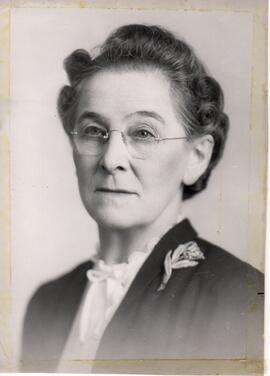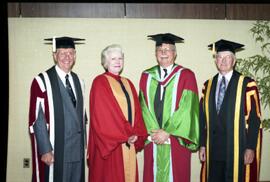Image of Dr. Howard R. Nixon, instructor, School of Physical Education, seated at his desk.
Bio/Historical Note: Dr. Howard Ronald Nixon was born 19 May 1928 and raised in Saskatoon, where his parents owned a plumbing business. He completed his Journeyman's plumbing certification, but not satisfied to make this career he headed out for bigger things. Dr. Nixon loved sports, first as a participant, then this love grew to seeing sport as a community activity that benefitted youth, and then on to the bigger picture as a way to promote health and wellbeing for all members of the community. He was a high school and university athlete himself; at UBC Dr. Nixon competed on the wrestling, football, swimming and gymnastics teams. He joined the School of Physical Education at the University of Saskatchewan as an instructor. At that time every student was required to take Physical Education, and if they were non-swimmers were required to take at least one swimming class. Many a rural student had their first aquatic experience in the little pool in Qu’Appelle Hall where Dr. Nixon was determined they would be swimming by the end of the class, and most succeeded. He went on to become director and was instrumental in the formation of the College of Physical Education. He became the college’s first acting dean in 1972 and was dean from 1974-1977. Dr. Nixon also served for one year (1982) as acting dean of the College of Home Economics. He returned to the College of Physical Education and went on to become assistant vice-president of University Student Affairs and Services. Dr. Nixon coached the Huskies wrestling and swimming teams to considerable success. He became involved in the Western Canada University sport fraternity, and in the development of sport and recreation organizations and programs throughout Saskatchewan, where he was often called upon as a speaker or organizer. Dr. Nixon also was an active member of committees for our city's Canada Games hosting, and in particular the Western Canada Summer Games in 1979, which led to the construction of the Field House. He was a member of the group that brought PARTICIPACTION to Saskatoon; he masterminded the Umea/Saskatoon competition. His commitment was recognized by both the Saskatoon (1986) and Saskatchewan (1987) Sports Halls of Fame, and the Sports Wall of Fame at the U of S (1984). He was a Kinsman Sportsman of the Year (1974) as a builder. He completed his own MA and PhD in Physical Education in Bloomington, Indiana. Dr. Nixon then returned to the U of S. After much campaigning the School of Physical Education achieved college status and he was appointed the first dean. In 1965-1966 he was seconded by the provincial government to look at the needs and activities of youth in the province. The report, "Youth in Our Time" led to the establishment of the Provincial Youth Agency, which later became the Department of Culture and Recreation. A request from Ottawa took him on a year's leave from the U of S and one of his most gratifying achievements, the establishment of a national youth program to bring young people together from every part of the country and give them an opportunity to visit and serve in different communities. Dr. Nixon became founding co-chairman of KATIMAVIK, the national youth exchange program, which is still going today. In 2000 he became an Officer of the Order of Canada for this work. From 1982-1985 he served as alderman for the City of Saskatoon. Dr. Nixon retired from the U of S in 1992. In 2000 he was conferred Honourary Alumni Member of the U of S for the many positive contributions he made. Howard Nixon died 6 January 2015 in Saskatoon. Nixon Crescent in the Dundonald neighbourhood of Saskatoon honours him.



